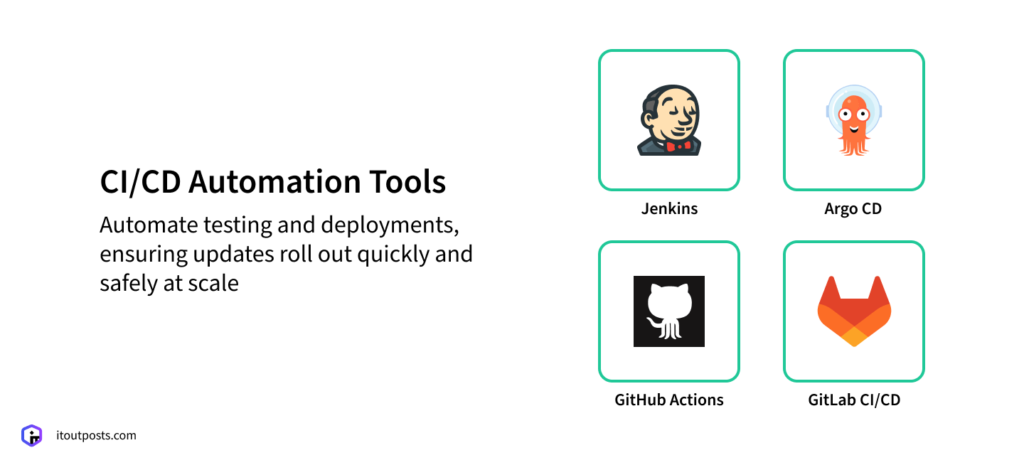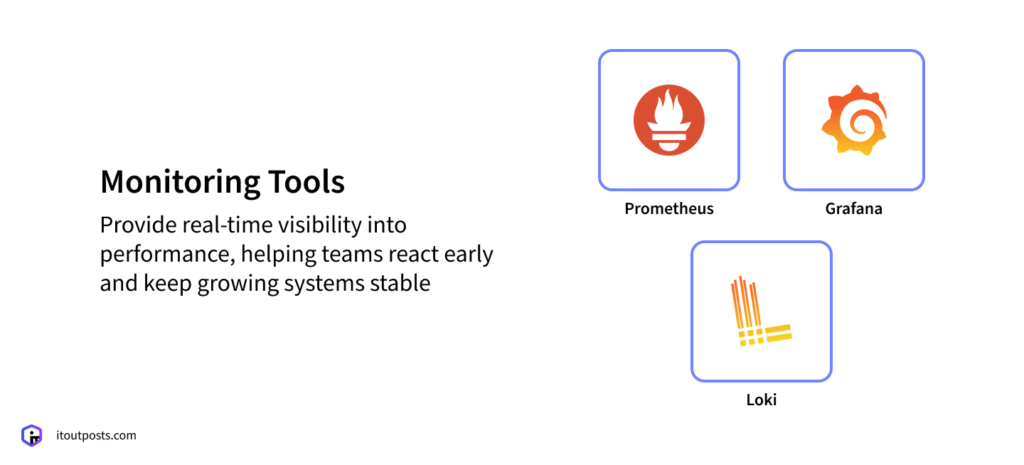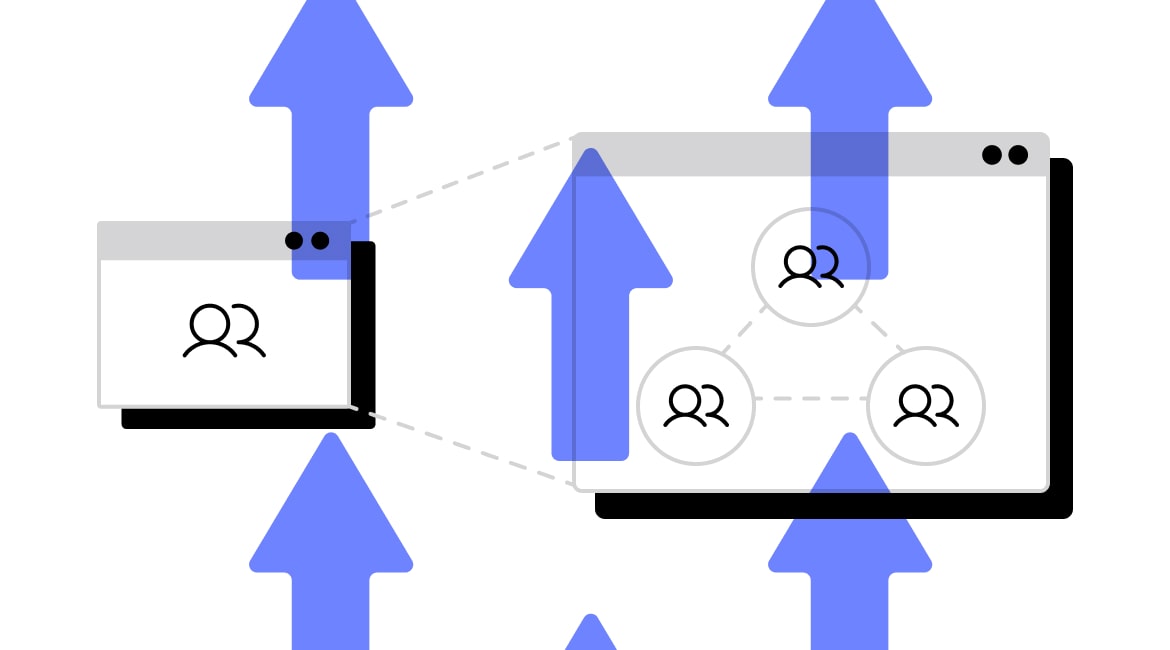Contents
Work feels simple while the team is relatively small, updates are under control, and the picture stays clear. Then suddenly, you’re growing fast, customers expect instant updates, and your once-simple setup starts to fall apart.
That’s when most teams realize they’ve outgrown their DevOps tools. It’s not that the old ones were bad; they just weren’t built for what you’ve become.
We’ve seen this story plenty of times at IT Outposts. The good news? The right stack can completely change how you scale. So, let’s talk about the tools that make that possible.
Infrastructure as Code (IaC) Tools

As the business takes off, new servers, services, and tools pile up quicker than anyone can manage them. Before long, you’ve got servers set up slightly differently, configs scattered across different folders, and no one’s entirely sure which version is the “real” one.
That’s where IaC, the groundwork no professional DevOps team skips, comes in. This approach lets you describe your entire setup, including servers, networks, and databases, as code. You can track it, review it, and recreate it whenever you need.
So, when demand grows, you don’t have to build new environments by hand or copy old ones with a dozen hidden differences. You just run the same code again, and the system expands in a predictable way.
Most teams we work with rely on Terraform because it’s stable, flexible, and works across just about any cloud. Pulumi is also becoming popular with dev-heavy teams since it uses real programming languages.
Docker

Sooner or later, teams face the same issue: the app behaves one way in testing and another in production. Nobody changed much, yet the results don’t match. This gap comes from how the environment drifts as projects grow.
Docker changes this. It’s a platform that lets you package the app together with its dependencies and settings into a container. The container runs the same way on any system, keeping development and production aligned.
When the product needs to scale, Docker makes it much easier. You don’t have to rebuild what you already have—you just spin up more containers when you need extra capacity. They can be placed across different servers, and updates roll out smoothly without bringing the whole system to a stop.
Kubernetes

At IT Outposts, we often call Kubernetes the king of scaling. It has earned this title by letting systems grow at their own pace, without anyone rushing in to add servers by hand.
Kubernetes manages containers, deciding where they should operate, how many of them are required, and how to keep the whole system balanced. When traffic increases, it launches new containers to handle the load. When activity slows down, it removes the extras so you don’t waste precious resources. And this is what makes scaling with Kubernetes feel effortless.
On top of that, Kubernetes spreads workloads across multiple servers, so no single machine ends up overloaded. If one node fails, the system automatically redirects workloads to healthy ones.
CI/CD Automation Tools

As teams expand, releases are often the first area to lose rhythm. It’s all predictable until merge conflicts, unstable builds, and missing notes on pipeline changes slow you down.
CI/CD tools allow teams to do the following: push code, run tests, build, deploy, and roll out with rules clear and the process repeatable. Jenkins, GitLab CI/CD, and GitHub Actions are the usual suspects. They’ve proven their reliability over years of real use. Argo CD joins the list for one big reason—it works perfectly with Kubernetes. As the system scales to more clusters, Argo maintains production exactly as described in your codebase.
The key features to look for in your potential DevOps automation tool — comparison criteria
Monitoring Tools

When systems start to scale, this environment is often harder to manage. More services, more logs, more data being processed, and it becomes more challenging to see the full picture behind the system. That’s where our usual monitoring golden trio steps in: Prometheus, Grafana, and Loki:
- Prometheus is the data collector. It allows you to track all the tiny signals your systems send out, like CPU, latency, requests per second, etc. It exposes shifts in system load early enough to maintain consistent performance.
- Grafana is where the picture comes to life. You open a dashboard and see if your new feature is consuming more memory, or if traffic in a region is nearing its limit.
- Loki completes the picture with logs. When Prometheus reports a spike, Loki helps you reveal the activity that caused it.
Stop Searching for the Perfect Stack—It Already Exists
Every tool we’ve discussed solves a piece of the same puzzle: how to grow without losing control. And you don’t have to reinvent this puzzle from scratch.
Because we built AMIX.
It’s a ready-to-use infrastructure setup that already includes the tools you actually need for scaling, the reliable, battle-tested ones. Everything’s wired together, documented, and ready to launch. You don’t spend weeks comparing tools or wondering how to connect them—you just start.
You save time, avoid expensive setup mistakes, and focus on your product.
So, if you’re tired of searching for your perfect stack, you already found it. Get AMIX for free!

I am an IT professional with over 10 years of experience. My career trajectory is closely tied to strategic business development, sales expansion, and the structuring of marketing strategies.
Throughout my journey, I have successfully executed and applied numerous strategic approaches that have driven business growth and fortified competitive positions. An integral part of my experience lies in effective business process management, which, in turn, facilitated the adept coordination of cross-functional teams and the attainment of remarkable outcomes.
I take pride in my contributions to the IT sector’s advancement and look forward to exchanging experiences and ideas with professionals who share my passion for innovation and success.
